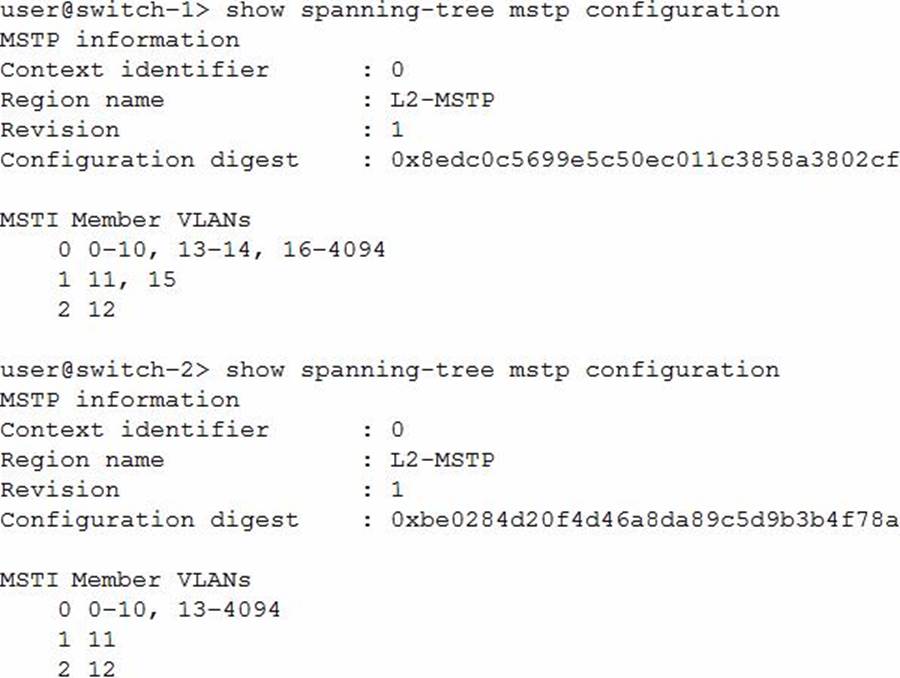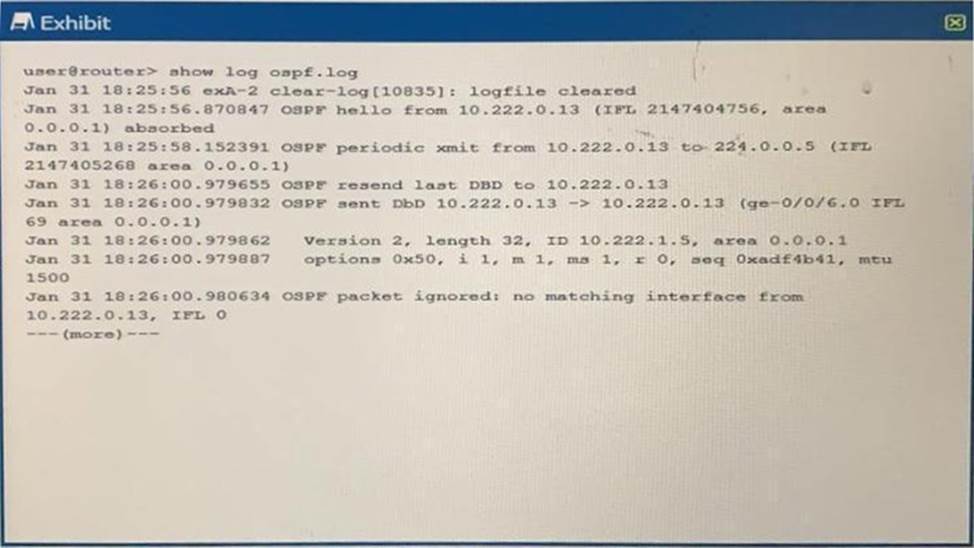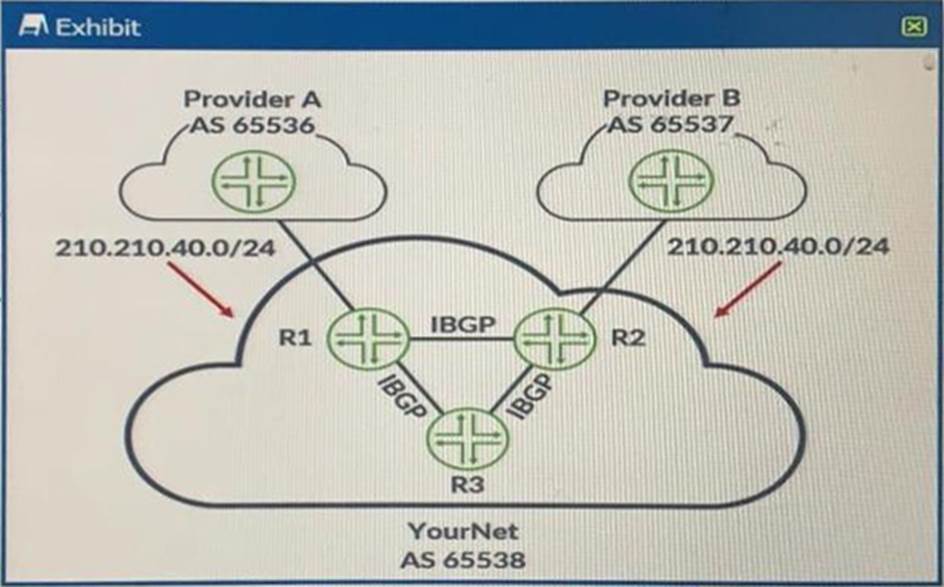Juniper JN0-648 Enterprise Routing and Switching, Professional (JNCIP-ENT) Online Training
Juniper JN0-648 Online Training
The questions for JN0-648 were last updated at Jan 02,2026.
- Exam Code: JN0-648
- Exam Name: Enterprise Routing and Switching, Professional (JNCIP-ENT)
- Certification Provider: Juniper
- Latest update: Jan 02,2026
You are deploying PIM source-specific multicast (SSM) for a new multicast messaging service. You have configured the multicast source to use 235.44.123.100 as the multicast address. You are not able to join the PIM SSM multicast feed.
Which two solutions would resolve this problem? (Choose two.)
- A . Reconfigure the multicast source to use an address in the range of 224.0.0.0 through 224.255.255.255.
- B . Reconfigure the multicast source to use an address in the range of 232.0.0.0 through 232.255.255.255.
- C . Add the multicast address to the [edit routing-options multicast ssm-map] stanza.
- D . Add the multicast address to the [edit routing-options multicast ssm-groups] stanza.
Click the Exhibit button.

You have configured MSTP in your Layer 2 network. You are having problems with it establishing correctly.
Referring to the exhibit, what is causing the problem?
- A . You must assign a context ID number other than zero
- B . The MSTI-to-VLAN mapping does not match
- C . The region name is not correct
- D . The revision number is the same on both devices
You are currently using VLAN IDs 2 through 300 within your Layer 2 domain and you need to configure VSTP to prevent loops You must ensure that all VL ANs are loop free.
In this scenario, which statement is correct?
- A . You must enable RSTP to account for all VLANs.
- B . You must ensure that the VLANs are balanced between two different root bridges.
- C . You must ensure that the bridge priority is set to the lowest value on all switches in the Layer 2 domain.
- D . You must enable all VLANs, 2 through 300, under the VSTP configuration
You are designing a multicast topology to support IPv4 IPTV broadcasts in your organization. The design should support multiple multicast senders with overlapping group addresses while preventing interference between them. Client devices currently do not support IGMPv3.
Which approach would fulfill these requirements?
- A . Implement PIM-SM and SSM with SSM maps to support IGMPv2 clients
- B . Implement bidirectional PIM
- C . Assign group addresses in the 224/4 range and implement PIM-DM
- D . Implement MLD
Exhibit.

Referring to the log shown in the exhibit, what is the problem with the OSPF adjacency establishment?
- A . The interface IP addresses on the subnet are duplicates.
- B . There is an MDS authentication mismatch.
- C . The referenced IP address does not exist on the network segment.
- D . The OSPF database description packet is malformed.
Your IPv4 multicast network uses different MX Series routers for the source DR and the PIM sparse-mode RP.
What is required before PIM register messages are exchanged between the DR and RP routers?
- A . Add a tunnel services PIC to the RP router.
- B . Add an adaptive services PIC to the DR router.
- C . Enable tunnel services on the DR and RP routers.
- D . Configure PIM encapsulation on the DR and RP routers.
Exhibit.

YourNet is learning the 210.210.40.0/24 route from Provider A and Provider B YourNet would like to forward traffic destined to the 210.210.40.0/24 networking using Provider B.
Referring to the exhibit, how would you accomplish this task?
- A . Add the well-known no-export community to the routes learned through R2.
- B . Apply an export policy to R1’s IBGP peers to set a higher local preference.
- C . Add the well-known no-export community to the routes learned through R1.
- D . Apply an export policy to R2’s IBGP peers to set a Their local preference.
Which two statements about BGP communities are true? (Choose two.)
- A . A prefix can only belong to one community.
- B . A prefix can belong to more than community.
- C . A community is not a transitive attribute.
- D . A BGP device can set, append, or modify the community of a route.
Which two statements are true about IS-IS levels? (Choose two.)
- A . Level 2 systems do not advertise Level 2 routes into a Level area by default.
- B . Level 2 systems must use the loopback address as a part of the ISO network address.
- C . Level 1 system only from adjacencies with other systems that have different area IDs.
- D . Level 1 systems use a default route to reach AS external routes located in other areas.
You must ensure that all management traffic sourced from your Junos devices is set with a specific DSCP
code-point value.
Which action will accomplish this task?
- A . Apply the DSCP code-point to the [edit class-of-service host-outbound-traffic] hierarchy.
- B . Apply the DSCP code-point to the [edit class-of-service interface lo0.0] hierarchy
- C . Apply the DSCP code-point in an egress policer.
- D . Apply the DSCP code-point to a rewrite rule.
Latest JN0-648 Dumps Valid Version with 89 Q&As
Latest And Valid Q&A | Instant Download | Once Fail, Full Refund

